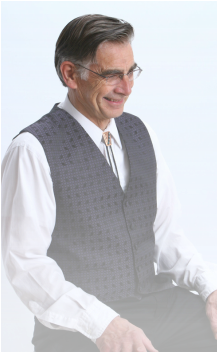Meet Tom Allan

Tom Allan began playing music in his father's band when he was just 14 years old. From these early beginnings, Tom developed a love of music that has spanned a lifetime. Growing up playing in Minnesota dance bands, Tom's appreciation for music is closely linked to his audience's enjoyment.
While Tom learned to play traditional German polkas and popular dance music as a young man, his lifelong interest in the accorgan was sparked by a chance encounter with an accordionist who was known for a different sound--one that featured more complex chord patterns and greater versatility of style found in ballads, fox-trots, and waltzes. Additionally, Tom drew inspiration from Earl Grant, a B-3 Hammond player whose organ sound featured a full, expressive tone.
Once introduced to the inherent variety of the instrument, Tom was hooked. Though he also learned to play tuba and electric bass guitar, it was the accorgan's range that appealed to him. While he hasn't lost his love of the traditional sounds of the accordion or the swing of popular dance tunes, Tom has never seen the instrument as defined by a single sound. In his capable hands, the accorgan can be what the listener prefers it to be--featured strongly or softened, more organ than accordion or vice versa, a focused melody or a full-bodied background offering a deep, orchestral sound.
While Tom learned to play traditional German polkas and popular dance music as a young man, his lifelong interest in the accorgan was sparked by a chance encounter with an accordionist who was known for a different sound--one that featured more complex chord patterns and greater versatility of style found in ballads, fox-trots, and waltzes. Additionally, Tom drew inspiration from Earl Grant, a B-3 Hammond player whose organ sound featured a full, expressive tone.
Once introduced to the inherent variety of the instrument, Tom was hooked. Though he also learned to play tuba and electric bass guitar, it was the accorgan's range that appealed to him. While he hasn't lost his love of the traditional sounds of the accordion or the swing of popular dance tunes, Tom has never seen the instrument as defined by a single sound. In his capable hands, the accorgan can be what the listener prefers it to be--featured strongly or softened, more organ than accordion or vice versa, a focused melody or a full-bodied background offering a deep, orchestral sound.